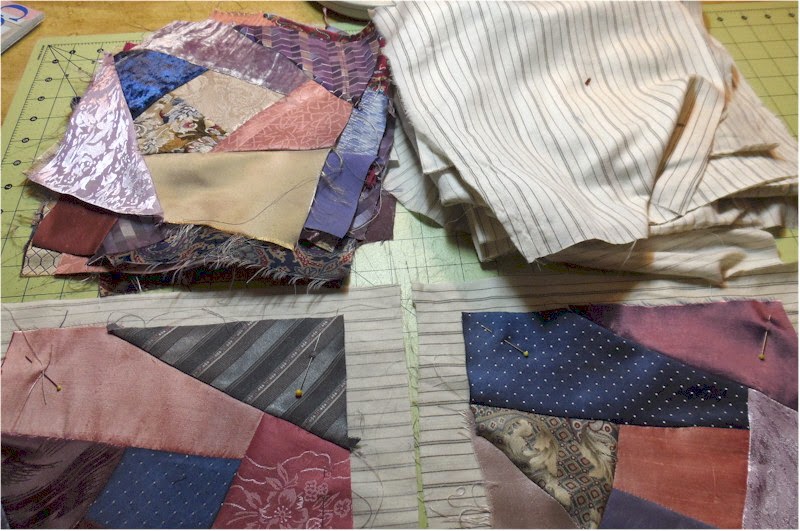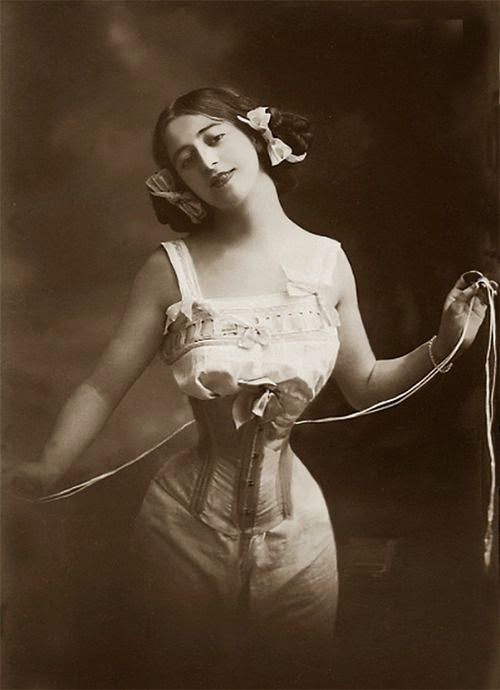(I combined two previous posts into this one.) I know many people love piecing blocks but for me it is a tedious chore at best. So whenever I am doing a batch I do a couple extra. Since I have the whole mess out, it not that hard to do a couple more. I keep a bag of the extras and sometimes I use them when I join a round robin or give them to a student to get them going... I just want to get the blocks done as soon as I'm able and get to the fun part...
I've tried the Martha Green's crumb method, Allie's curve method, and Judith Montano method's of piecing.
But I always go back to just paper piecing and mostly use the same pattern over and over... This time I'm using Sharon Boggin's block pattern - #28. This means every single block is #28. Once you rotate the blocks and embellish, no one ever notices that they are all the same pattern... Believe me!!!! I enlarged it a bit so I will have an 8" square block when done. If want some advice on choosing a paper pattern I posted some
here.
I don't even pay any attention to what colors are going to go where on a block when cutting. Once I have my pile of fabrics I just start stacking and cutting at random ... trying to get as many different fabrics per patch as possible... Then I will sorta deal them out at random, making any necessary adjustments. Of course this works the best when you have a large selection of fabric like I did this time..
If you did a good job gathering fabrics which are harmonious, it is nearly impossible to mess up from that point on. If you look at your fabrics in a pile and like them, toss them around and still like them, they are going to look good on a block no matter what you do... This the "pile test". I do this with trims with students even before they pick fabric because it you assemble a pile of trims that work together, you can work backwards and pick the fabric last..
Now I had several choices.. I could make blocks one each month, or in smaller batches or do all 12 at once. Doing them all at once will give you a more consistent look if you plan to use them together.. I chose all at once because piecing is not my favorite and I wanted it over with. Here is how I go about it.
First I had cut 14 assorted of each pattern piece.. no plan. I just stacked random fabrics from the pile five at a time and cut. You can see the pile of patches on the left. I put up two card tables and laid out 14 squares of card stock.
Then I took a pile of each pattern piece and just randomly put it on a square. Trying not to put two of the same fabric adjacent to each other.
Until I had them all out... Then I stepped back and tweeked a few here and there. I try to balance out color, value, and patterns at this point...I'm not too fussy. I had a lot of patches from paisley ties and I wanted some on each block.. This goes VERY fast because I try to not overthink this at this point... Any goofs I make at this point can be dealt with when I start embellishing.
The pieces of card stock act like trays and I can just pile them up and head to the sewing machine.
I set a small folding table next to the sewing machine, put a towel and my little travel steam iron on it so I can press each seam as sewn. And off I go with the pieces already on the paper trays next to the machine
Within no time I have them 14 done.
Although I pressed seams as I went along, at this point they need a good press and put on a foundation but the piecing is done for the entire year..
These are very rich blocks in this winter pastel palette. Lots of silk, taffetas, and velvets. Most of the silk patterned patches are from a day we hit a thrift store with an overstock of ties that were only 49 cents a piece.
And what's a perfect day...?. A cold wintry day with a fire, a white chocolate mocha and a dear friend to stitch with....


.jpg)
.jpg)
.jpg)

.jpg)







.jpg)




.jpg)





.jpg)

.jpg)
.jpg)




























.jpg)
